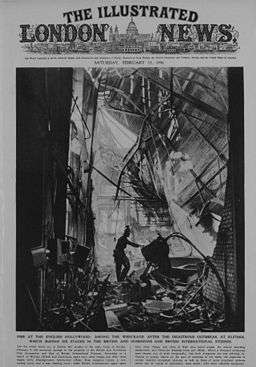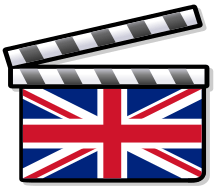British and Dominions Imperial Studios
British and Dominions Imperial Studios was a short-lived British film production company located at Imperial Place, Elstree Way, Borehamwood, Hertfordshire that was active from 1929 to 1936, when it ceased production after the studio facilities were destroyed by fire.

British and Dominions Imperial was a successor to British National Pictures, which began operations in 1925 and was taken over by British International Pictures in 1927. British and Dominion Imperial was incorporated for the purpose of physically producing sound films, and the new studio at Borehamwood was the first purpose-built sound studio in Europe. Blackmail (1929), directed by Alfred Hitchcock and the first British talkie, was made at the facility by the company.
Other filmmakers who worked for British and Dominions Imperial included producer Anthony Havelock-Allan, who made Lancashire Luck (1937) there. Alexander Korda's London Films produced The Private Life of Henry VIII, which featured an Oscar-winning performance by Charles Laughton, at British and Dominion Imperial.[1]
The studio was destroyed by fire on 9 February 1936.[2][2] The Herbert Wilcox production London Melody (1937) had to be completed at Pinewood Studios.[3]
In 1996, a plaque was placed at the location of the former studio.[4]
Productions
References
- Hanson, Patricia and Alan Gevinson (1993). The American Film Institute Catalog of Motion Pictures Produced in the United States: Feature Films, 1931-1940. Berkeley, California: University of California Press. p. 774. ISBN 978-0520079083.
- Tomlinson, Richard. "Borehamwood Film Studios: The British Hollywood". Herts Memories. Retrieved 25 January 2014.
- Warren, Patricia (2001). British Film Studios: An Illustrated History. B. T. Batsford. p. 82.
- "British and Dominions Imperial Studios". Plaques of London. Retrieved 25 January 2014.
